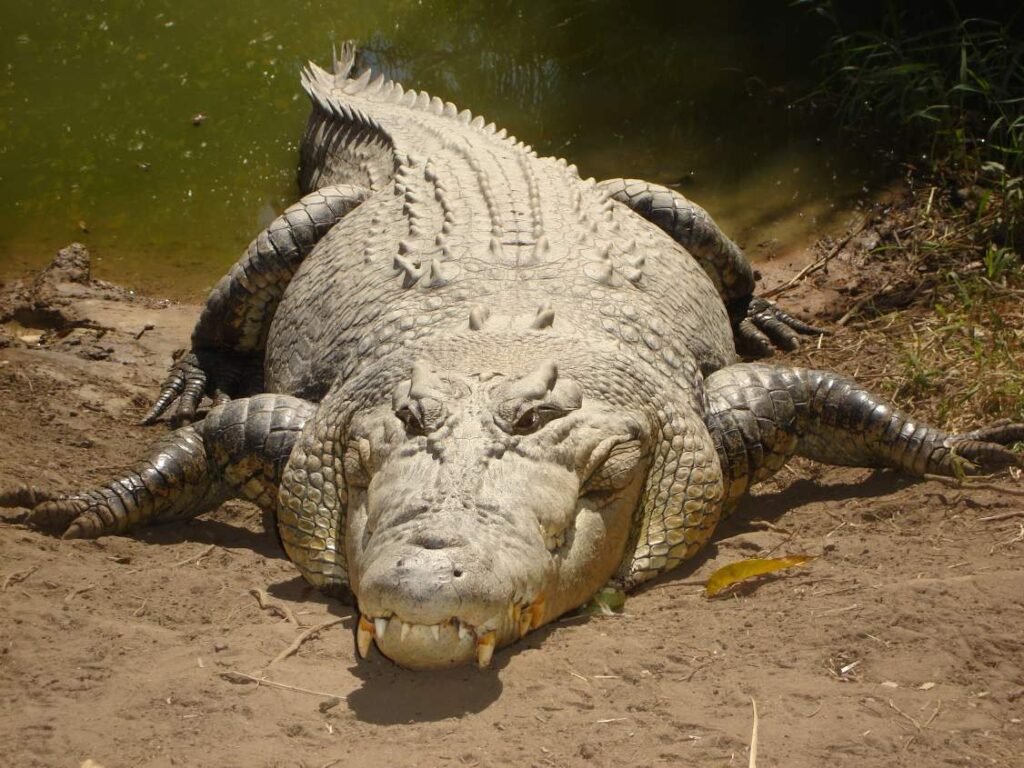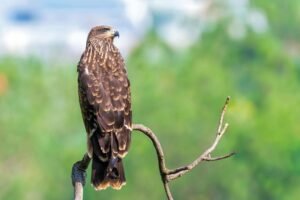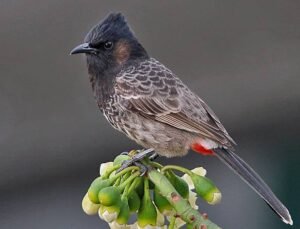Saltwater Crocodile: The World’s Largest Reptile
Introduction
The Saltwater Crocodile is the largest living reptile and one of the most powerful predators in the animal kingdom. Known for its impressive size and adaptability, this ancient creature has fascinated humans for centuries. Found mainly in Southeast Asia, Northern Australia, and parts of the Indian subcontinent, the Saltwater Crocodile thrives in both saltwater and freshwater environments. This article explores all aspects of this incredible reptile in simple, clear language suitable for readers worldwide.

Physical Description
The Saltwater Crocodile has a robust body covered with thick, scaly skin. They can grow to an extraordinary length, with adult males reaching up to 7 meters (about 23 feet) and weighing over 1000 kilograms (2200 pounds). Females are generally smaller, averaging 3 meters in length. Their coloration varies from grey to olive, with lighter underbellies and darker blotches.
Key features include:
- Strong, muscular tail used for swimming
- Long, broad snout with sharp teeth carefully designed to catch and hold prey
- Webbed feet to improve swimming ability
Habitat and Distribution
Saltwater Crocodiles are found across a range that includes the eastern coast of India, Southeast Asia, northern Australia, and some Pacific Islands. They inhabit:
- Coastal estuaries
- Mangrove swamps
- Rivers and freshwater lakes near coastal regions
They are remarkable for their ability to tolerate saltwater, often venturing into open seas to travel between habitats or find food.
Diet and Hunting
As apex predators, Saltwater Crocodiles have a varied diet depending on their size and environment. Young crocodiles mainly eat insects, amphibians, small fish, and crustaceans. Adults prey on larger animals such as:
- Fish
- Birds
- Mammals including wild boars, deer, and sometimes even sharks
They use stealth and power to ambush prey, often waiting quietly near the water’s edge before striking with great speed.
Behavior and Adaptations
Saltwater Crocodiles show fascinating behaviors and adaptations:
- They are excellent swimmers and can stay underwater for up to an hour.
- They regulate their body temperature by basking in the sun or cooling off in water.
- Territorial animals establishing dominance through displays like roaring and clapping jaws.
- Capable of long-distance travel in the ocean.
Reproduction and Life Cycle
Breeding season varies by location but usually occurs in the warmer months. Mating takes place in water, and females build nests on sandy banks or in vegetation near water. Females lay 40 to 60 eggs, which incubate for about 90 days. The temperature during incubation determines the sex of the hatchlings.
Young crocodiles face many threats but receive protection from their mothers for several weeks after hatching.
Relationship with Humans
Historically, Saltwater Crocodiles have been feared and respected by local communities. They sometimes come into conflict with humans due to attacks or habitat encroachment. However, they hold cultural significance in parts of Asia and Australia.
Efforts are ongoing to reduce negative encounters through education and conservation programs.
Conservation Status
Once heavily hunted for their valuable skins, Saltwater Crocodiles faced serious declines. Thanks to protection laws and conservation efforts, their populations have rebounded in many regions. They are currently classified as “Least Concern” by the International Union for Conservation of Nature (IUCN), but threats from habitat destruction and illegal hunting remain.
Fun and Interesting Facts
- The Saltwater Crocodile holds the title of the largest living reptile.
- They have the strongest bite force recorded in the animal kingdom.
- Capable of swimming at speeds up to 30 km/h in short bursts.
- Can live up to 70 years or more in the wild.
- Despite their fierce reputation, they play a crucial role in maintaining healthy ecosystems.
Conclusion
The Saltwater Crocodile is a powerful symbol of ancient wildlife surviving in the modern world. Understanding their habits, habitats, and conservation helps us appreciate these magnificent reptiles and the vital roles they play in their environments. Protecting them ensures that future generations can witness one of nature’s greatest predators in the wild.
Frequently Asked Questions (FAQs)
Q1: What is the size of a Saltwater Crocodile?
A1: Adult males can grow up to 7 meters in length and weigh over 1000 kilograms, while females are smaller, around 3 meters.
Q2: Where do Saltwater Crocodiles live?
A2: They are found in coastal regions, estuaries, rivers, and mangroves in Southeast Asia, Northern Australia, India, and some Pacific Islands.
Q3: What do Saltwater Crocodiles eat?
A3: Their diet includes fish, birds, mammals, and sometimes sharks, depending on their size and habitat.
Q4: Are Saltwater Crocodiles dangerous to humans?
A4: Yes, they can be dangerous and attacks have occurred, but many conflicts are reduced through education and respectful coexistence.
Q5: How long do Saltwater Crocodiles live?
A5: They can live up to 70 years or more in the wild.
Q6: What is being done to protect Saltwater Crocodiles?
A6: Conservation efforts include legal protection, habitat preservation, and anti-poaching laws.
Q7: How do Saltwater Crocodiles adapt to saltwater?
A7: They have special glands that help excrete excess salt, allowing them to live in marine and freshwater environments.
Q8: How do temperature and incubation affect crocodile eggs?
A8: The temperature during incubation determines whether the hatchlings are male or female.
Komodo Dragon: The Giant Lizard of Indonesia
You can explore more about snakes on our website:
| Snake Name | Read More |
|---|---|
| Cobra Snake | Cobra Snake Information |
| Russell’s Viper | Russell’s Viper Snake Info |
| Common Krait | Common Krait Snake Info |
| Saw-scaled Viper | Saw-scaled Viper Info |



